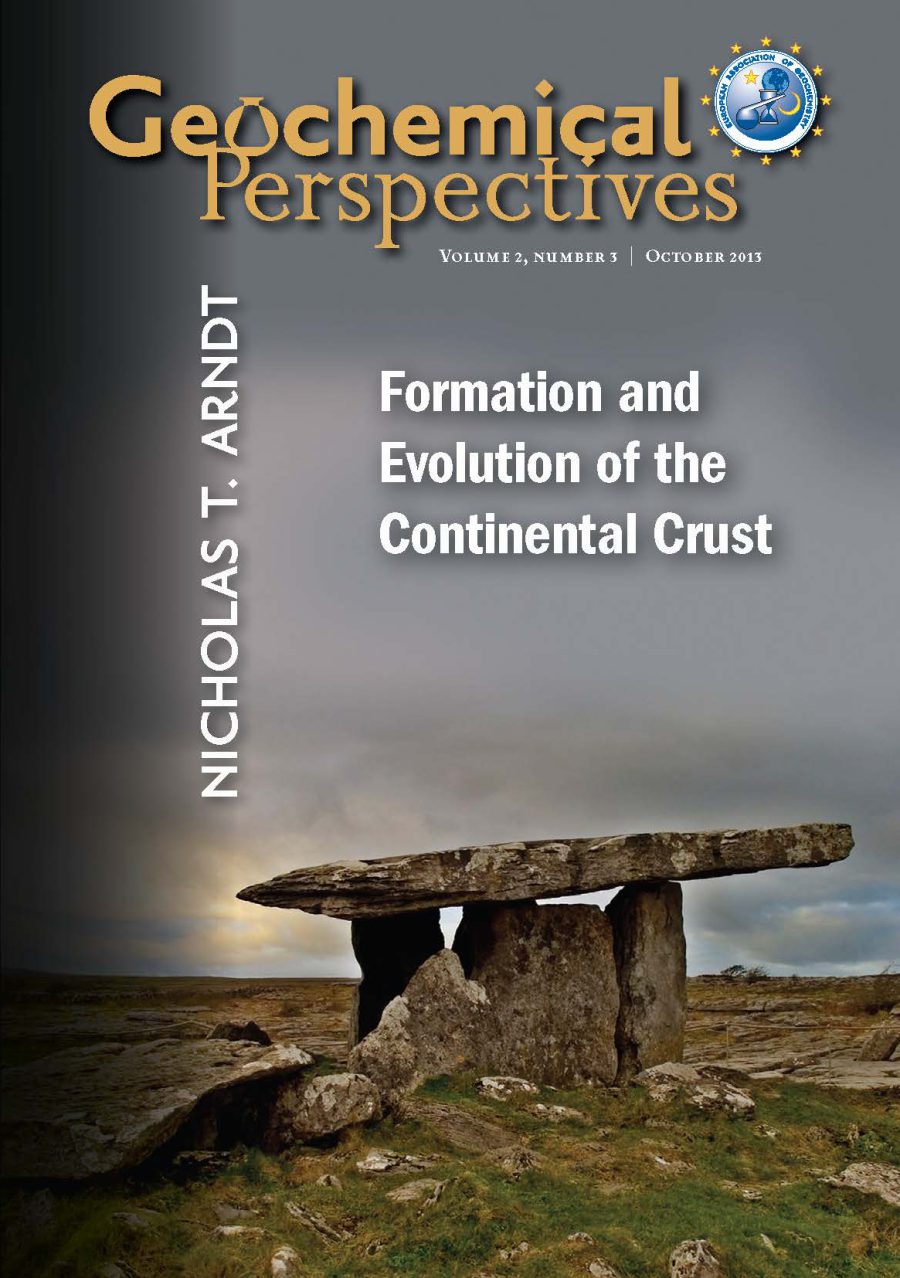
Formation and Evolution of the Continental Crust
by Nicholas T. Arndt1doi: 10.7185/geochempersp.2.3 | Volume 2, Number 3 (pages 405-533)
Abstract
In the Archean, like now, the granitoids that constitute the core of the continental crust formed in subduction zones. Hydrous basaltic magmas from the mantle wedge rose to the base of the crust where they fractionally crystallised or remelted underplated rocks to yield more evolved granitic magmas. Alternative models to explain Archean granitoids, which call on melting in intraplate settings such as the bases of oceanic plateaus, are implausible because such settings lack the water that is essential to form voluminous granitic melt.
From the end of the Archean to the late Proterozoic, the continental crust grew in a series of major pulses, each triggered by accelerated mantle convection. The arrival of large mantle plumes displaced material from the upper mantle, accelerating the rate of subduction and causing a pulse of crustal growth.
The Hadean crust was mafic and it underwent internal partial melting to produce the granitic melts that crystallised the Jack Hills zircons. This crust was disrupted by the Late Heavy Bombardment and from then on, since about 3.9 Ga, plate tectonics has operated.
Erratum:
Page 409 line 6: “greater” should read “less”
Page 409 line 7: “Al2O3 > (CaO + Na2O + K2O)” should read “Al2O3 < (CaO + Na2O + K2O)”

